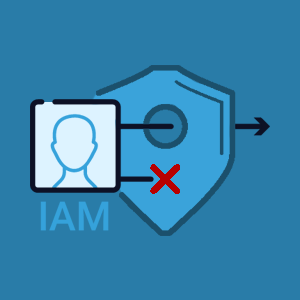 In today’s hyper-connected digital ecosystem, where information is a valuable asset, the need for robust security measures has never been more critical. Identity Access Management (IAM) stands as a pivotal solution in fortifying organizations against unauthorized access, ensuring that the right individuals have appropriate access to resources. This article delves into the intricacies of IAM, exploring its definition, significance, and the diverse range of entities that stand to benefit from its implementation.
In today’s hyper-connected digital ecosystem, where information is a valuable asset, the need for robust security measures has never been more critical. Identity Access Management (IAM) stands as a pivotal solution in fortifying organizations against unauthorized access, ensuring that the right individuals have appropriate access to resources. This article delves into the intricacies of IAM, exploring its definition, significance, and the diverse range of entities that stand to benefit from its implementation.
Understanding Identity Access Management (IAM):
IAM serves as the guardian of digital gates, employing a comprehensive approach to user identity management and access control. At its core, IAM involves a set of policies, processes, and technologies designed to manage the lifecycle of user identities within an organization. This includes the creation, modification, and deletion of user accounts, along with defining and enforcing access permissions. The pillars of IAM include authentication, authorization, administration, and Single Sign-On (SSO).
- Authentication: Verifying the identity of users through various methods, including passwords, biometric data, and multi-factor authentication (MFA).
- Authorization: Determining the level of access or permissions a verified user has within the system, ensuring the principle of least privilege.
- Administration: Managing user identities throughout their lifecycle, from onboarding to offboarding, to maintain an accurate and secure user directory.
- Single Sign-On (SSO): Enabling users to access multiple systems with a single set of credentials, simplifying the login process and reducing the need for multiple passwords.
Importance of IAM:
Enhanced Security:
IAM systems significantly reduce the risk of unauthorized access by implementing robust authentication and authorization processes.
Multi-factor authentication adds an extra layer of security, requiring users to provide multiple forms of verification.
Compliance and Governance:
IAM helps organizations comply with regulatory requirements by enforcing access policies and maintaining an audit trail of user activities.
It supports governance by providing visibility into who has access to what resources.
Efficiency and Productivity:
Streamlined user onboarding and offboarding processes save time and resources.
SSO capabilities reduce the number of credentials users need to manage, enhancing overall productivity.
Risk Management:
IAM enables organizations to identify and mitigate potential security risks by monitoring and analyzing user activities.
Granular access controls allow organizations to tailor permissions based on roles and responsibilities, minimizing unnecessary access.
Top 10 Identity Access Management Companies:
As organizations recognize the critical need for IAM solutions, several companies have emerged as leaders in providing comprehensive identity access management services. Here are the top 10 IAM companies that have made significant strides in the industry:
- Okta: Known for its robust identity and access management platform, Okta offers solutions for authentication, authorization, and lifecycle management.
- Ping Identity: Ping Identity focuses on providing intelligent identity solutions, including SSO, multi-factor authentication, and access management.
- ForgeRock: ForgeRock (now joining forces with Ping Identity) specializes in identity-centric security, offering a platform that covers authentication, authorization, and identity management.
- OneLogin: OneLogin is recognized for its cloud-based IAM solutions, catering to businesses seeking secure and efficient access management.
- IBM Security Identity Manager: IBM’s IAM solution provides a comprehensive approach to managing user identities, access, and compliance.
- Microsoft Azure Active Directory: Azure AD is Microsoft’s cloud-based identity and access management service, integral to its suite of cloud services.
- RSA SecurID Access: RSA SecurID Access is a leading provider of multi-factor authentication solutions, enhancing security across various industries.
- SailPoint: SailPoint focuses on identity governance, helping organizations manage and control user access to critical systems and data.
- Centrify: Centrify specializes in securing access to applications and infrastructure through its identity-centric solutions.
- CyberArk: CyberArk is renowned for its privileged access management solutions, addressing the unique challenges associated with privileged accounts.
Conclusion:
As organizations navigate the complex terrain of digital security, the implementation of Identity Access Management becomes not just a choice but a necessity. The top 10 IAM companies mentioned above play a pivotal role in providing cutting-edge solutions that empower organizations to fortify their defenses, manage user identities effectively, and ensure secure access to critical resources. In an era where data breaches and cyber threats are on the rise, IAM stands as a beacon, guiding organizations toward a more secure and resilient digital future.
